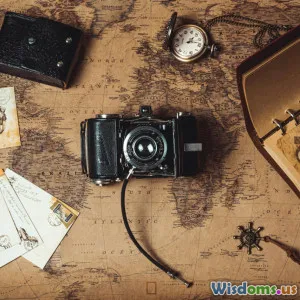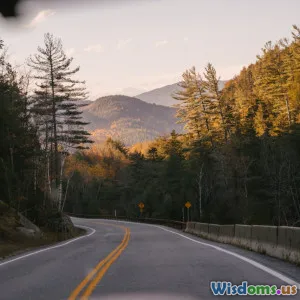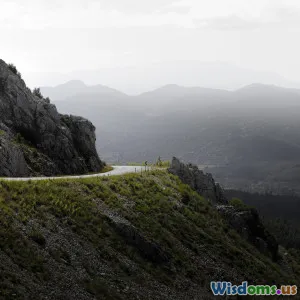
Ten Common Travel Photography Mistakes Beginners Still Make
12 min read Unlock the secrets behind stunning travel photos by avoiding 10 beginner photography mistakes—with actionable tips, real-world insights, and pro-level guidance for your next adventure. (0 Reviews)
Ten Common Travel Photography Mistakes Beginners Still Make
Travel photography tantalizes us with breathtaking scenery, vibrant cultures, and once-in-a-lifetime moments—but too often, budding photographers capture images that fall flat. Ever flipped through your travel images and wondered why they don’t quite evoke the magic you experienced? You're not alone. Even with Instagram feeds flooded by wanderlust-worthy photos, most beginners repeat the same classic errors—wasting precious opportunities and memories along the way.
This article explores the ten most common mistakes travel photography beginners make, why they happen, and, most importantly, how to fix them. Drawing on professional perspectives, real-life examples, and actionable tips, you’ll learn how to transform your travel stories into vivid, memorable images—no matter what camera you hold.
1. Ignoring the Magic of Light
Lighting is the heartbeat of photography. Yet, far too many beginners snap photos at the wrong time of day or forget to notice the direction and quality of light. The world might look picture-perfect to the eyes at noon, but harsh sunlight creates flat images, blown-out highlights, and dark, unflattering shadows.
Real Example: In the Moroccan Sahara, travelers arrive mid-afternoon at the dunes. Eager to document their journey, beginners often pull out cameras under fierce sun; result: flat orange sand, squinting faces, and sky washed out to white. Meanwhile, photographers who wait until golden hour (shortly after sunrise or before sunset) capture glowing sands, dramatic shadows, and the blue sky rich with color gradients.
Pro Tip:
- Plan photo sessions around "golden hour" for soft, warm light and vibrant colors. Use tools like PhotoPills or smartphone apps to track sunrise and sunset.
- If shooting in midday is unavoidable, find open shade or use a reflector to gently diffuse harsh light.
2. Lack of Preparation and Research
Great photographers seldom stumble upon their best shots blindly. Too often, beginners arrive at iconic locations unprepared—missing the best vantage points, breaking local rules, or realizing too late that creative possibilities abound just outside the tourist trail.
Data Point: According to a 2022 Unsplash survey, 63% of travel photographers noted that prior research of a location significantly improved their image quality and composition.
Actionable Advice:
- Research locations extensively. Check online image repositories, local blogs, and mapping apps to find unique viewpoints.
- Familiarize yourself with local customs regarding photography. Not every location or moment is appropriate for shooting.
- Scout the spot before you start shooting: Look for leading lines, backgrounds, and potential distractions in the frame.
- Pack the right gear, batteries, and memory cards. Nothing kills creativity like low battery or full storage moments before the shot of the day!
3. Poor Composition Choices
"Point and shoot" rarely does justice to world-class scenery. Beginners often center subjects out of habit, ignore the frame's edges, or include distracting elements.
Common Mistakes:
- Horizon slants awkwardly.
- People’s heads cut off at the frame’s edge.
- The subject competes with background clutter.
Techniques for Better Images:
- Rule of Thirds: Place key subjects at the intersections of an invisible 3x3 grid for balanced and dynamic photos.
- Leading Lines: Use paths, fences, or rivers to guide viewers’ eyes to the subject.
- Foreground Interest: Place an object, texture, or detail in the foreground for depth and context. For example, frame the Eiffel Tower behind café chairs for a Parisian atmosphere.
Tip from the Pros: "Always check the corners. If something doesn’t add, it detracts," – Steve McCurry, renowned travel photographer.
4. Neglecting the Local Story
Travel is about more than landscapes. While beginners often fixate on postcard icons, they neglect authentic local stories: impromptu markets, craftspeople at work, or kids at play. As a result, photos lack emotion or a sense of place.
Illustrative Example: Photographer Brandon Stanton’s widely acclaimed "Humans of New York" project became a worldwide phenomenon—because he focused on people, not landmarks.
Action Steps:
- Look beyond the obvious. Document daily life: rituals, preparation of meals, street performers.
- With permission, photograph locals and interact. Ask questions—often their stories add depth to your captions and images.
- Capture details: a weathered hand weaving a basket, faded business signage, local produce baskets.
Remember: The best images spark curiosity about the place and its people.
5. Over-Reliance on Auto Mode
While modern cameras and phones are marvels, letting the device make all decisions sacrifices creative control. Auto Mode may choose fast shutter speeds or high ISO when it’s the last thing your vision needs.
Consequences: Blurry backgrounds when you want sharp detail, or color shifts when mixed lighting is present.
Examples:
- In a dusk-lit Havana street, Auto Mode might pump up ISO, introducing unwanted digital grain.
- At a colorful Turkish bazaar, it can overexpose vibrant fabrics, flattening color pops.
Solutions:
- Learn your camera’s basics: Aperture, Shutter Speed, and ISO.
- Try Aperture Priority for portraits (blurry backgrounds), or Shutter Priority for action shots.
- Don’t be afraid of Manual Mode—learn to adjust settings to match your creative vision.
6. Forgetting to Back Up Photos
Travel is unpredictable. Lost gear, theft, or failed memory cards can wipe away memories forever.
Real-World Nightmare: In 2019, travel blogger Marie Li lost her DSLR on a Patagonia bus ride. Months of images vanished because she hadn’t backed them up.
Preventative Measures:
- Store images on multiple SD cards rather than one.
- Back up photos to a laptop or portable drive at the end of each day.
- Use cloud backup solutions (Google Photos, Dropbox, iCloud) with strong passwords for extra safety.
7. No Attention to the Story or Sequence
Too many unconnected images make for unengaging albums. Beginner travelers shoot in scatter-shot fashion, but fail to consider narrative: What is the journey? Why does this place matter?
Pro Insights: Maggie Steber, National Geographic photographer, emphasizes "sequences"—clusters of images telling a complete story.
How to Improve:
- Think like a storyteller: Show the arrival, exploration, local characters, special moments, and a closing shot.
- Take wide, medium, and close-up images of each scene or event.
- Include transitional moments: the travel, the weather, the unexpected.
Result: Your albums become engaging narratives, transporting viewers into the spirit and flow of the journey.
8. Ignoring Camera Stability
Nothing spoils travel memories like blurry images from shaky hands. Low light, fatigue, or spontaneous excitement all increase the risk.
Solutions:
- Carry a lightweight travel tripod or mini tripod.
- Use image stabilization if your camera or lens provides it.
- Find stable surfaces or rest your arms against sturdy objects.
- For phone shooters: employ burst mode or self-timer to avoid shake caused by tapping the shutter.
Fact: A 2023 Statista report showed that 48% of mobile photography complaints were about blurry images—mostly caused by poor stability.
9. Too Much Post-Processing
Instagram filters and over-editing tempt many beginners. Vibrance, contrast, or HDR can quickly turn travel images artificial or cartoonish, not timeless.
Symptoms of Over-Editing:
- Hyper-saturated skies.
- Unnatural skin tones.
- Halos or loss of detail in highlights and shadows.
How Professionals Edit:
- Edit with a light touch—enhance what’s already there, don’t invent the scene.
- Regularly compare edits to the unprocessed original.
- Focus on basic correction (exposure, contrast, cropping) before delving into creative filters.
Pro Advice: "Make your edits invisible. If the viewer notices editing, it’s probably gone too far." – Lynsey Addario, Pulitzer-winning photojournalist.
10. Disregarding Cultural Respect and Privacy
Photography is powerful—but sometimes intrusive. Beginners can inadvertently offend by photographing sacred rituals, private gatherings, or vulnerable people without consent. In some places, taking photos can even be seen as theft of spirit or privacy.
Responsible Travel Photography:
- Always ask for permission when photographing locals, especially children or elders.
- Respect “no photography” signage in temples, markets, or communities.
- Be sensitive to context: funerals, religious ceremonies, or moments of grief should almost always be off-limits unless explicitly invited.
Serious Consequences: In 2021, a viral blog post showed tourists being fined or ejected from religious sites in Nepal for ignoring “No Photos” rules.
Do Good:
- Share photos with subjects, when possible. Some communities appreciate copies or seeing themselves in print!
- Support local businesses in exchange for photos—buy souvenirs, snacks, or pay for a local guide’s knowledge.
Conclusion: Crafting Memorable, Meaningful Travel Images
Travel photography excellence isn’t about expensive gear or ticking off famous icons. It’s about light, thoughtfulness, preparation, and narrative. By sidestepping these ten common mistakes—waiting for beautiful light, prepping like a professional, refining composition, becoming a sensitive storyteller, gaining control of your camera, safeguarding memories, holding a camera steady, respecting the post-processing process, and honoring cultural boundaries—you elevate your images from snapshots to evocative stories.
So before you take off next, pause for a moment. Plan not just what you’ll capture, but why and how. See with curiosity, shoot with intention, and remember: the best travel photos inspire, educate, and honor the places and people you visit.
Happy shooting, and may your next photo be your best!
Rate the Post
User Reviews
Popular Posts

















